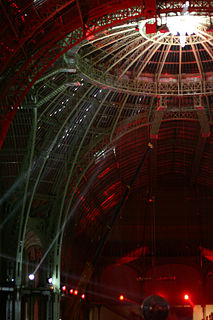 W
WNightlife is a collective term for entertainment that is available and generally more popular from the late evening into the early hours of the morning. It includes pubs, bars, nightclubs, parties, live music, concerts, cabarets, theatre, cinemas, and shows. These venues often require a cover charge for admission. Nightlife entertainment is often more adult-oriented than daytime entertainment. People who prefer to be active during the night-time are called night owls.
 W
WA diner is a small restaurant found predominantly in the Northeastern, Southeastern, and Midwestern United States, as well as in other parts of the US, Canada and parts of Western Europe. Diners offer a wide range of foods, mostly American cuisine, a casual atmosphere, and, characteristically, a combination of booths served by a waitstaff and a long sit-down counter with direct service, in the smallest simply by a cook. Many diners have extended hours, and some along highways and areas with significant shift work stay open for 24 hours.
 W
WIn planning, the evening economy describes economic activity taking place in the evening after many people finish daytime employment or formal education, such as eating and drinking, entertainment, and nightlife.
 W
WThe Late Shows are a one weekend annual cultural initiative developed in Tyne & Wear since 2007. They are intended to attract new audiences to museums and galleries. They have become the largest programme organised in the United Kingdom for the 'Museums at Night Festival'.
 W
WMuseums at Night is a twice-yearly festival of late openings, sleepovers and special events taking place in museums, galleries, libraries, archive and heritage sites in the United Kingdom. It is affiliated with the European Night of Museums programme, and takes place on weekends in late May and late October.
 W
WNight Mayor is a municipal title used for someone who represents and helps develop a city's nightlife. The earliest known use of the title was in Rotterdam, Netherlands.
 W
WNuit Blanche is an annual all-night or night-time arts festival of a city. A Nuit Blanche typically has museums, private and public art galleries, and other cultural institutions open and free of charge, with the centre of the city itself being turned into a de facto art gallery, providing space for art installations, performances, themed social gatherings, and other activities.
 W
WRush Street is a one-way street in the Near North Side community area of Chicago in Cook County, Illinois, United States. The street, which starts at the Chicago River between Wabash and North Michigan Avenues, runs directly north until it slants on a diagonal as it crosses Chicago Avenue then it continues to Cedar and State Streets, making it slightly less than a mile long. One lane also runs southbound from Ohio Street (600N) to Kinzie Street (400N) as part of a two-way street segment. It runs parallel to and one block west of the Magnificent Mile on the two-way traffic North Michigan Avenue, which runs at 100 east up to 950 north. The street, which is also one block east of the one-way southbound Wabash Avenue, formerly ran slightly further south to the Chicago River where over time various bridges connected it to the Loop, Chicago's central business district.
 W
WThe White Nights are all-night arts festival held in many cities in the summer. The original festival is the White Nights Festival held in Saint Petersburg, Russia. The white nights is the name given in areas of high latitude to the weeks around the summer solstice in June during which sunsets are late, sunrises are early and darkness is never complete. In Saint Petersburg, the Sun does not set until after 10 p.m., and the twilight lasts almost all night.